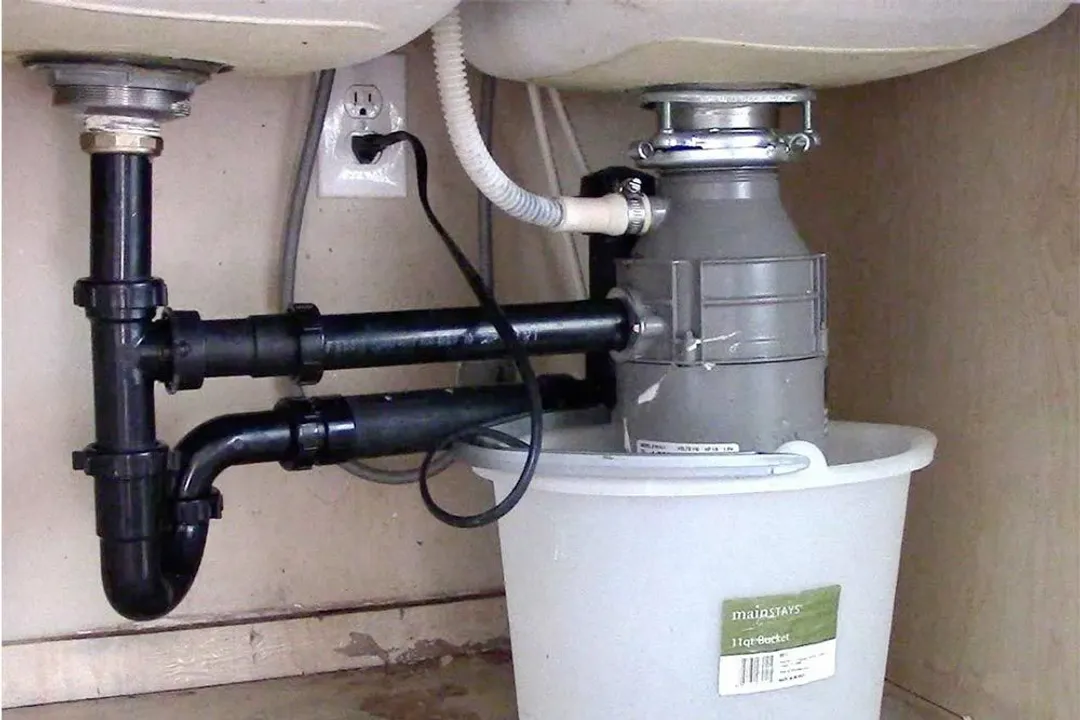Practical Techniques for Repairing a Dripping Garbage Disposal
Practical Techniques for Repairing a Dripping Garbage Disposal
Blog Article
We have stumbled on this post pertaining to Why Is down the page on the web and believe it made sense to discuss it with you here.

Garbage disposals are important cooking area home appliances that help in dealing with food waste effectively. However, a dripping waste disposal unit can be an irritating and untidy trouble to deal with. Luckily, several leakages can be taken care of quickly with a couple of basic steps. In this article, we will go over just how to repair a leaking garbage disposal efficiently.
Intro
Waste disposal unit are installed under cooking area sinks and are designed to shred food waste into smaller sized pieces, enabling it to go through the plumbing system conveniently. While these gadgets are typically dependable, leakages can happen with time due to wear and tear, loosened connections, or damages to the device.
Usual Causes of Leakages in Rubbish Disposals
Worn Seals and Gaskets
Seals and gaskets play a crucial function in stopping water from dripping out of the garbage disposal. With time, these parts can weaken, leading to leaks around the disposal device.
Loose Connections
The links in between the waste disposal unit and the plumbing system can end up being loosened gradually, causing water to leak out throughout procedure.
Splits or Openings in the Disposal Unit
Physical damages to the garbage disposal, such as fractures or openings in the real estate, can also lead to leakages.
Recognizing the Source of the Leakage
Prior to trying to repair a dripping garbage disposal, it is important to recognize the source of the leakage. This can normally be done via visual assessment or by conducting straightforward tests.
Visual Inspection
Evaluate the waste disposal unit device carefully for any kind of indications of water leak. Pay very close attention to locations around seals, gaskets, and connection points.
Examining for Leakages
One way to examine for leaks is by running water via the disposal device and looking for any visible indications of leak.
Tools and Materials Needed for Fixing a Leaking Garbage Disposal
Prior to beginning the fixing process, collect the required devices and materials, consisting of a screwdriver, adjustable wrench, plumbing technician's putty, replacement seals or gaskets, and epoxy or patching material for repairing splits or openings.
Step-by-Step Overview to Fixing a Leaking Waste Disposal Unit
Switch off the Power
Prior to trying any type of repair services, ensure that the power to the garbage disposal system is switched off to stop the threat of electrical shock.
Find the Leakage
Determine the precise location of the leakage and determine the reason.
Tighten up Links
Make use of a wrench to tighten up any type of loosened connections in between the disposal unit and the pipes system.
Change Seals or Gaskets
If the leakage is because of worn seals or gaskets, get rid of the old parts and change them with new ones.
Patching Splits or Openings
For splits or openings in the disposal unit, use epoxy or a suitable patching product to secure the broken area.
Evaluating the Waste Disposal Unit After Repair
When the repair is complete, check the waste disposal unit by running water with it to ensure that the leakage has been solved.
Preventive Upkeep Tips to Avoid Future Leaks
To avoid future leakages, it is essential to perform regular maintenance on your garbage disposal. This includes keeping it tidy, staying clear of placing non-food items or tough things down the disposal, and periodically checking for leakages or other problems.
Verdict
To conclude, repairing a dripping garbage disposal is a relatively uncomplicated process that can be finished with basic tools and products. By complying with the actions outlined in this write-up and practicing precautionary maintenance, you can maintain your waste disposal unit in good working problem and avoid costly repair services in the future.
HERE’S HOW TO FIX YOUR GARBAGE DISPOSAL
WHAT TO DO IF SOMETHING IS STUCK IN YOUR GARBAGE DISPOSAL
If the impeller won’t turn, there’s probably something stuck in the disposal. It could be a steak bone or peach pit, although plumbers report pulling all sorts of inappropriate objects out of disposals, such as bottle caps or aluminum foil. Make sure power to the disposal is off, and look inside to see if you can see the source of the jam.
Never stick your fingers in a disposal. Pull out anything you see with tongs or pliers.
If the disposal still won’t work, it may be time to call a plumber or consider buying a new disposal. GEM Plumbing & Heating is here for all of your garbage disposal needs.
WHAT TO DO IF YOUR GARBAGE DISPOSAL DRAIN IS CLOGGED
Take everything out from underneath your sink and put a bucket or other container under your disposal to catch any water that drains out. Disconnect your disposal from the power supply. If it’s plugged into a wall outlet, unplug it. If it’s hardwired into an electrical box, go to the electrical panel and turn off the breaker for the disposal. Pour ¼ cup of baking soda into the drain, followed by ½ cup of white vinegar. Give the solution a few minutes to fizz and do its work. Look into the disposal with a flashlight to see if you can see an object that might be causing the clog. If you see it, remove it using tongs or pliers. MORE TIPS ON DEALING WITH A CLOGGED GARBAGE DISPOSAL
Never use drain cleaner in a garbage disposal. It can damage the plastic parts inside the disposal. You can also be splashed with the caustic liquid while working to clear the clog. Beware! Never stick your fingers into a garbage disposal. Trust us — not a good idea. In many instances, your dishwasher drains through your garbage disposal. This allows the disposal to grind any large food particles that may be drained out of your dishwasher. There are some jurisdictions, however, where the plumbing code prohibits such a connection. WHAT TO DO WHEN YOUR DISHWASHER DRAINS THROUGH THE DISPOSAL
Run some water in the sink so your plunger has at least a ½-inch of water to create a seal and plunge vigorously up and down several times. You may need to repeat this several times. Run hot water down the drain to clear any residue that remains.

I'm very occupied with Why Is and I'm hoping you enjoyed reading the entire entry. Sharing is caring. One never knows, you may just be helping someone out. Thanks a lot for your time spent reading it.
Call Today Report this page